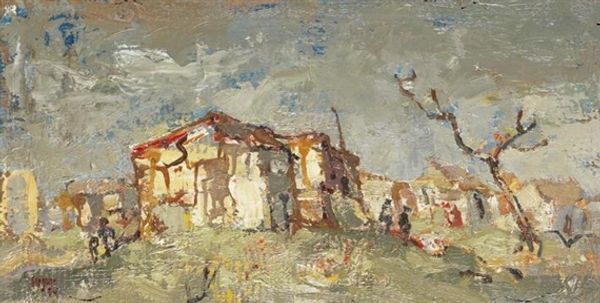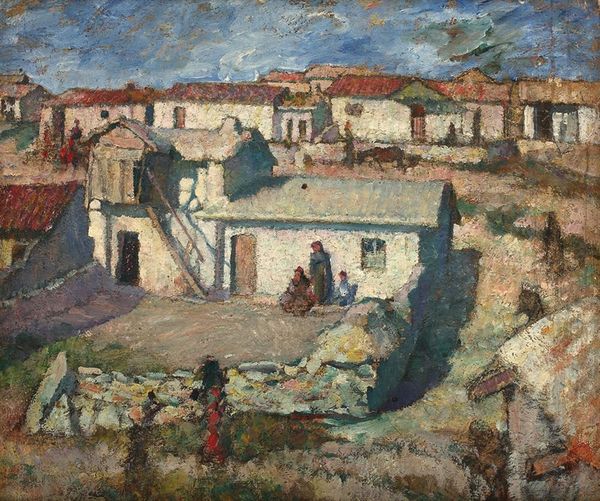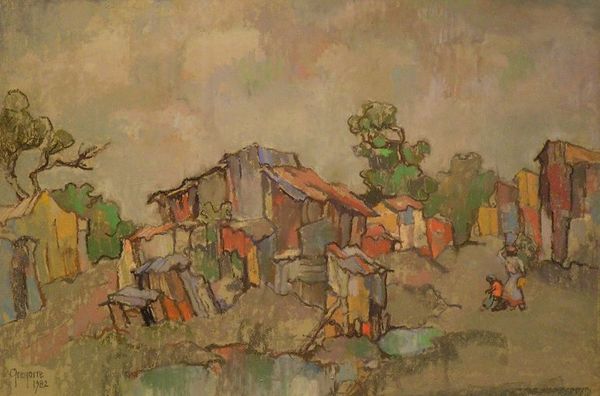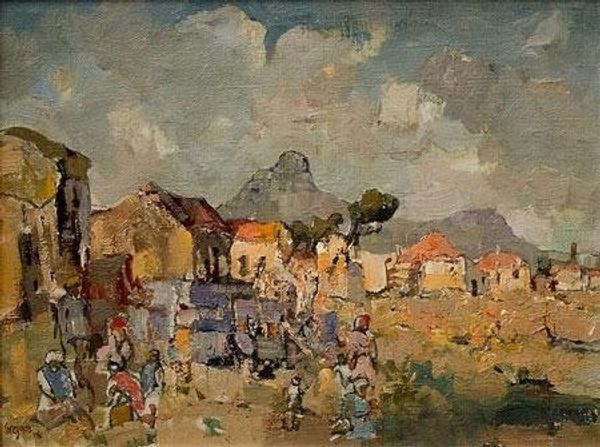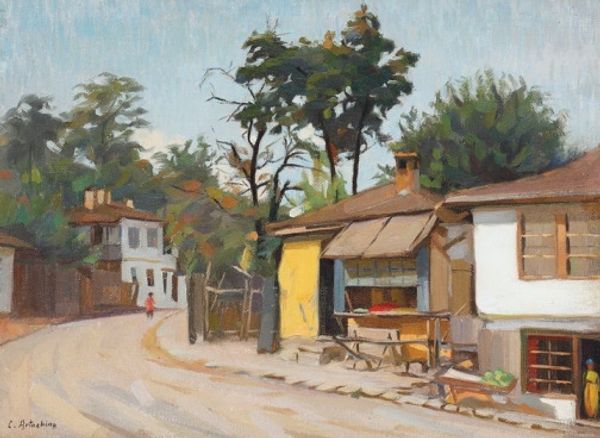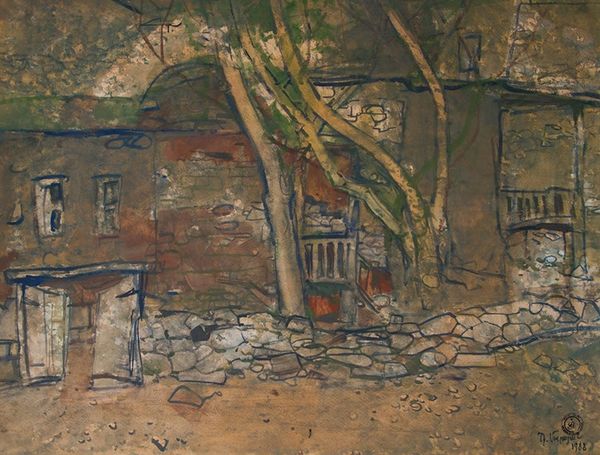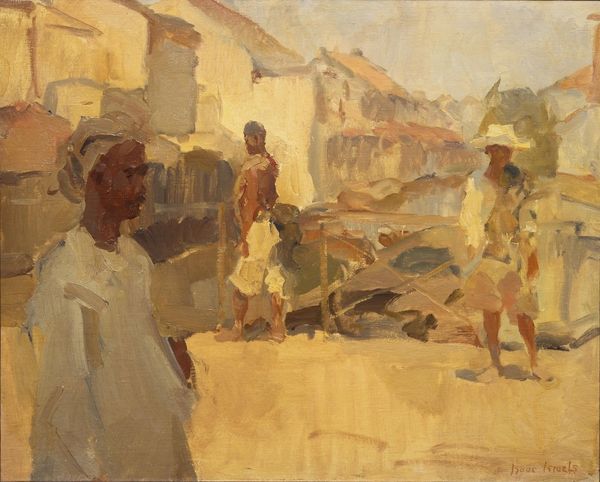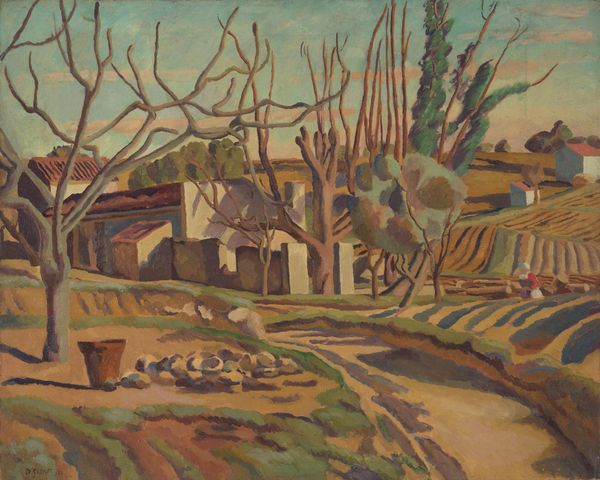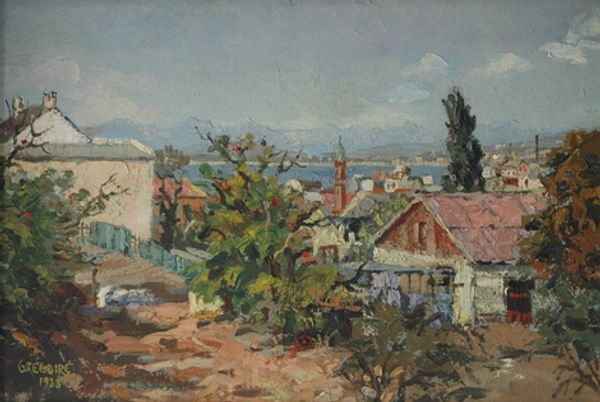
oil-paint
#
oil-paint
#
landscape
#
genre-painting
#
mixed medium
#
mixed media
#
watercolor
#
realism
Copyright: Gregoire Boonzaier,Fair Use
Curator: Looking at Gregoire Boonzaier's "Squatter Camp," the first thing that strikes me is how bleak the color palette is. The overwhelming grey of the sky really casts a pall over the whole scene. Editor: Yes, and it's interesting to note how that somberness contrasts with the clear visibility of the brushstrokes. Boonzaier has laid the oil paint on the canvas with a textural exuberance, calling attention to the physical making of the artwork. Notice how even the corrugated iron structures show evidence of painterly manipulation and technique. Curator: It does create an interesting tension. But consider also the sociopolitical landscape of South Africa. What statement do you think he might have been trying to make about those conditions by immortalizing this place, this community? Editor: Given that Boonzaier identified as a realist painter, I think it's important to acknowledge his interest in faithfully rendering what he sees around him, focusing more on the arrangement and qualities of raw materials and perhaps less on critical social issues or commentaries on wealth, power, and resource extraction. I believe he simply wanted to explore color relations or perhaps he took a cue from artists like Van Gogh and his interests in expressing personal sentiments via the observation of nature. Curator: I see your point. Yet, the very act of depicting a squatter camp—a space born of inequality—carries inherent socio-political weight, whether intended or not. We are left wondering: Whose gaze is this for? Whose narrative is being prioritized? Editor: But to analyze from a production-based perspective, look at his tools: brushstrokes thick with oil paint give texture to shacks. What stories are told in his mark-making? How do these brushstrokes mimic and celebrate the marks that laborers leave behind in forging steel, cutting timber, or assembling sheet metal into improvised buildings? These are crucial parts of the artwork's language too, and speak as loudly as any possible meaning ascribed to its iconography. Curator: That’s a valid observation. It encourages us to delve deeper into the intersectionality of form and context and to acknowledge the multifaceted and very tactile realities within which art is created and exists. Editor: Indeed, and when we center process in our thinking about this painting we create space to meditate on the complex negotiations between an artist's creative autonomy and art’s capacity to be a historical record of real people and real places. Curator: Food for thought, to say the least. This journey certainly gives us much to think about.
Comments
No comments
Be the first to comment and join the conversation on the ultimate creative platform.
